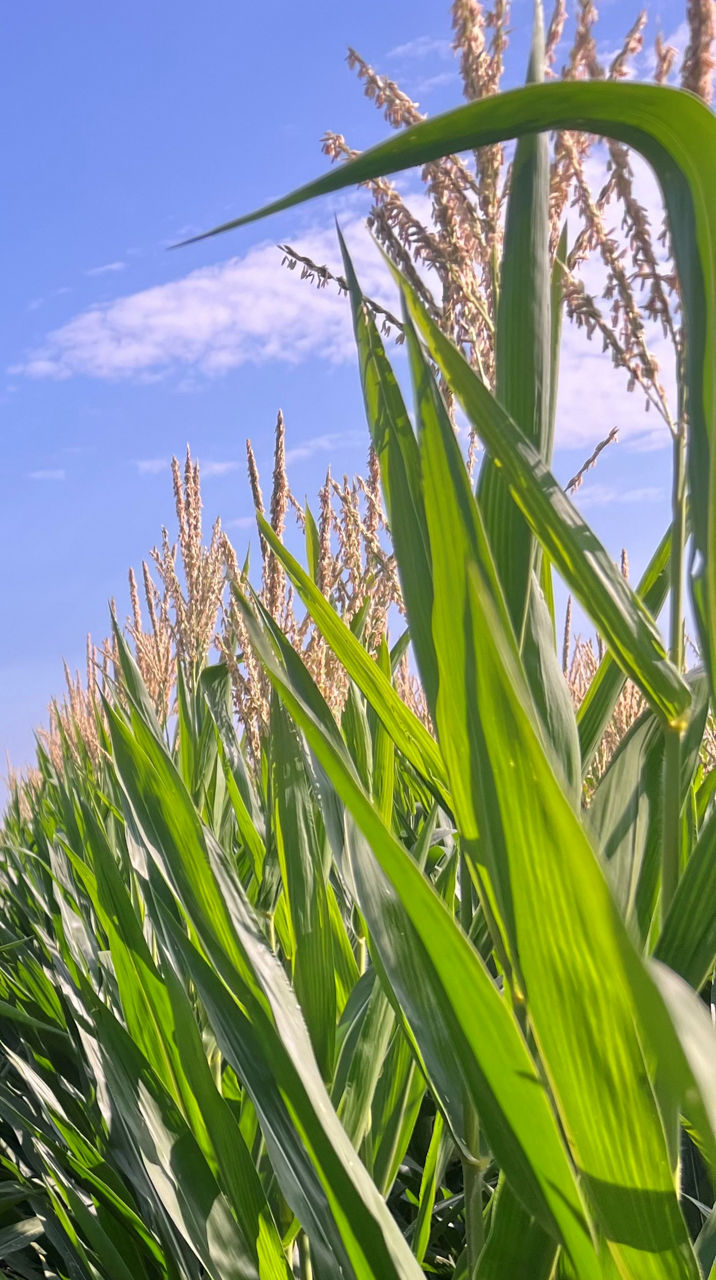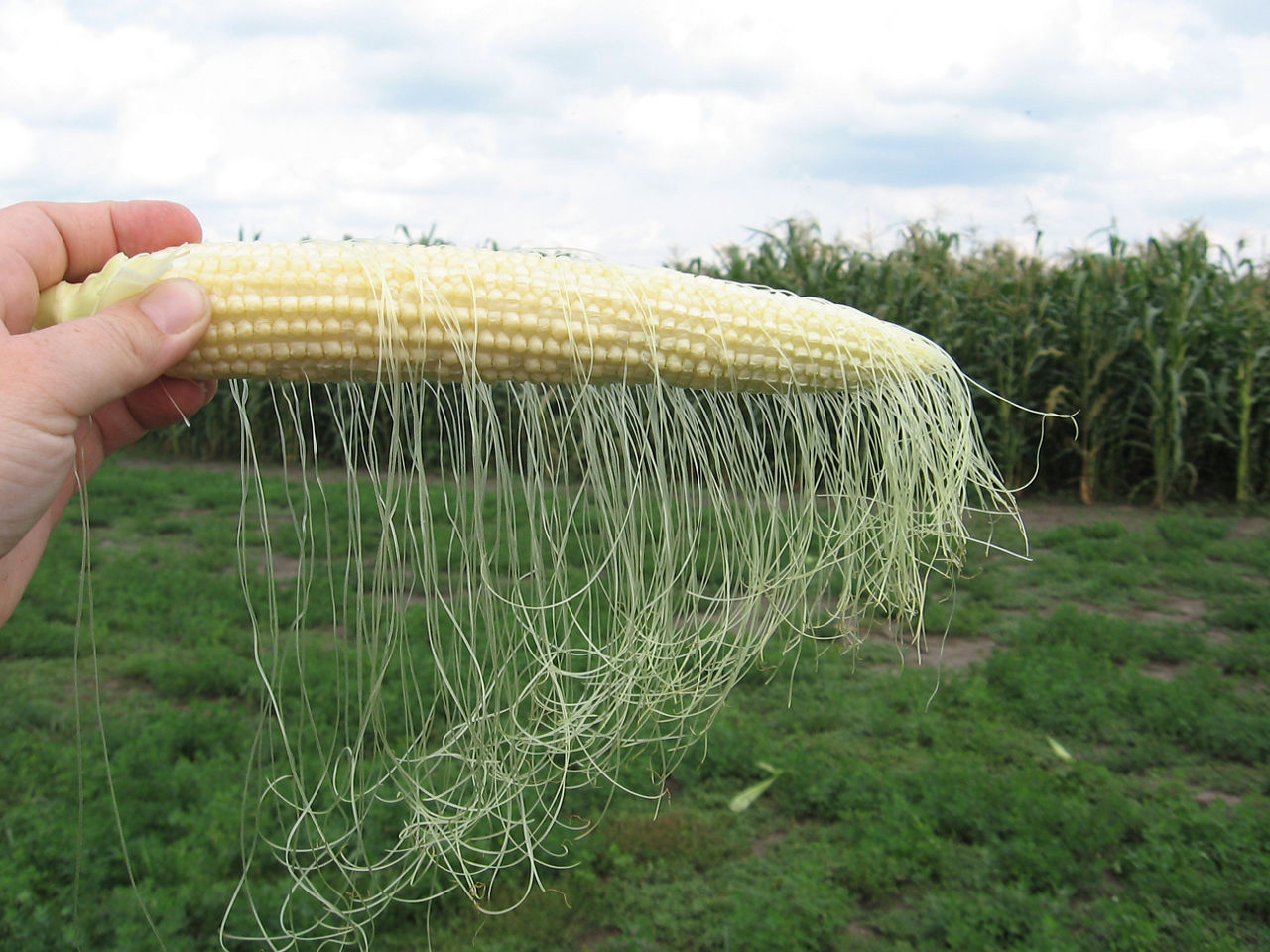Can Rain and Clouds Influence Pollination Process?
July 2, 2024
Pollination is a critical time during corn growth and development and its success or failure is dependent on many factors. The timing of pollen shed, silk emergence, and adverse weather conditions such as drought, heat, rain, and clouds are factors that may impact kernel set and development.1,2,3
Why is pollination timing critical?
The tasseling stage is the last vegetative growth stage before the reproductive stages, where potential kernels become viable kernels. This requires pollen, from any tassel, to contact a receptive silk. Every ovule or potential kernel is attached to a silk (Figures 1,2, and 3).
Fun Fact: There are 70 to 100,000 kernels in one bushel of corn. If a 250 bushel per acre crop is produced, 17.5 to 25 million individual silks were fertilized successfully on that acre!
Given adverse crop or environmental conditions, the timing of having viable pollen shedding and viable silks present can be shortened, limited, or missed altogether resulting in loss of yield potential.



Drought is a major factor that can impact pollination by de-synchronizing pollen shed and silk emergence. Silks contain considerable water and during drought silks may not emerge. Once pollen is shed from the tassel it is done and if the silks emerge later, the lack of pollen can result in reduced fertilization, kernel set, and yield potential.
However, an overlooked factor can be rain and cloudy weather during pollination. Cloudy weather during pollination can reduce the plant’s ability to produce photosynthates which are necessary during an important corn growth function. As a result, silk emergence and pollen shed may not synchronize and leave ovules unfertilized. Silks that have not received a viable pollen grain may continue to grow and become quite long. Cloudy weather can cause immature, fertilized ovules to abort resulting in kernel shells where fully developed kernels should occur. Continued cloudy weather can cause test weights to be reduced because of restricted photosynthesis.2
Ideal conditions for pollination include but are not limited to:
- Moderate Temperature
- Adequate Soil Moisture
- Relatively Low Humidity
In summary, any type of extreme weather condition can negatively impact the pollination process. Excessive periods of wet and cloudy conditions may lead to reduced photosynthesis within the plant. Rainfall, dew, and high humidity can limit pollen shed. Normal peak pollen shed is during the morning after the dew dries off and before the heat of the day.
Fun Fact: Gently remove the ear and husk from the plant, leaving silks attached. Gently shake the cob and allow the silks to fall away. Ovules with silks still attached are not fertilized (Figure 4). A fun way to monitor pollination progress!3

Channel Agronomist
Zak Swanson
Sources
1Nielsen, R.L. (Bob). 2020. Tassel Emergence & Pollen Shed. Corny News Network, Purdue University. https://www.agry.purdue.edu/ext/corn/news/timeless/Tassels.html
2Nielson, R.L. (Bob). 2015. Blue skies…not smiling on me. Corny News Network, Purdue University. https://www.agry.purdue.edu/ext/corn/news/articles_15/BlueSkies_0713.pdf.
3Nielsen, RL (Bob). 2016. A Fast & Accurate Pregnancy Test for Corn. Corny News Network, Purdue University. https://www.agry.purdue.edu/ext/corn/news/timeless/EarShake.html
Web sites verified 6/4/24. 1110_430801